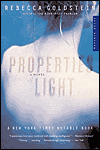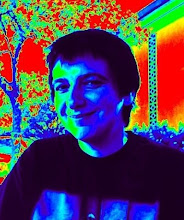Time like an arrow

When Martin Amis wrote his remarkable novel "Time's arrow" he managed something quite unique in the history of literature: storytelling with the arrow of time reversed. Mind it, this does not just mean that a significant sequence of event is listed in reverse order, it means a consistent narrative where at any given moment the direction of time is opposite to the usual entropy increasing, causality bound experience of time we all perceive in our lives. The novel delivers an astounding view of a flow of time and narration where causality is constantly reversed, effect preceed causes, people walk backward and move from death to birth, destruction is slow and laborious, creation is instantaneous and effortlessly achieved by reverse explosions, bodies emerging from fire and dust. Amis creates a scenario so convincing that the reader quickly begins to accept the inverted logic of reversed causality. One reaches this state of strange familiarity with the reverse flow of time and its logical implications at around the crucial turning point in the narration: the story that is being told is the life of a Nazi war criminal, from his death and old age in America, where he enjoyed a respectable career as a medical doctor after escaping from Europe at the end of the war and assuming a new identity, back to the key events of his life as one of the infamous doctors at Auschwitz, and all the way to the beginning of the persecution of the Jews and the rise to power of the Nazi, with a final glimpse of innocent childhood up to the final disappearance into birth. All along, the story is presented from the vantage viewpoint of a guest consciousness, which is at once tied up to the main character's corporeal experience and yet completely disjoint from his consciousness. In particular, the narrator has no free will to exert and can only follow the character's (or his own) life as a passive spectator, while the other consciousness, the one for which time passes in the usual causal direction that allows for free will, is deciding the course of this particular existence. The guest consciousness can only register what happens and try to make sense of his observations through the strange logic of reverted time. The vision of the Holocaust to which the earlier parts of the novel are a slow preparation are especially powerful in this distorted temporal perspective, as if forcing the reader to rethink it all once more, while the mind performs the instinctive task of readjusting the time's arrow and restore the true causal chain of events and its abherrant inhuman logic. A novel of great inventive and emotional power.

Incidentally, a few weeks ago I read another book by Amis, the collection of short stories "Einstein's monsters" around the theme of nuclear weapons and their dehumanizing effect they exert on the global consciousness of our species. It's also a pretty good one.

Prompted by the reading of Amis and his reversed arrow of time, I ended up looking at a very different book, dedicated to the physics of time's arrow, written by Lawrence Schulman, "Time's Arrows and Quantum Measurement". The book is quite original in its viewpoint. It considers two main occurrences of the problem of the arrow of time in physics, namely the relation between cosmological and the thermodynamical time arrows and the role of time in quantum measurement and the problem of the collapse of the wave function. The main argument for the fact that cosmological time and thermodynamics necessarily yield time arrows that point in the same direction is roughly based on a proposition made by Thomas Gold in the 50s that links the expansion of the universe to an increased number of possible states hence to the thermodynanmical increase of entropy. There are serious arguments against the Gold thesis and supporting the idea that a contracting universe would not necessarily reverse the arrow of thermodynamical time. In this respect, I would like to point out two other kinds of arguments that aim at linking thermodynamical and cosmological time. One is the Weyl curvature hypothesis, proposed by Penrose in an article "Singularities and Time-Asymmetry", in the Einstein Centenary volume in 1979, according to which the increase in entropy can be linked to an initial condition of vanishing of the Weyl curvature tensor of the gravitational field in the very early universe. In this scenario, even in a universe that will eventually contract entropy will continue to increase along with the Weyl curvature. Another point of view, also not considered by the author, is the idea of a direct link between time and thermodynamics through statistical mechanics. This is discussed, for instance, in a paper by Connes-Roelli as well as in Rovelli's book on loop quantum gravity and it can be related to the
formalism of KMS states in stastistical mechanics and to the Tomita-Takasaki modular group of von Neumann algebras and their time evolution. This also suggests a deep level at which the thermodynamic time and the cosmological time are linked, which is more sophisticated than the Gold proposal.
In the second part of the book, the author finds a very clever way to revive the hidden variable idea (well, this isn't what the author claims he is doing but it is difficult not to see it in this light). His approach is very original and argue in favor of the existence of "special initial states" for the quantum mechanical evolution which do not result in the superposition of macroscopic states like those of the poor old cat story. This effectively provides one with the usual dynanics of orthodox quantum mechanics but without wave function collapse, at the price of having introduced a particular selection of "special initial states".
In both his view of the cosmological and the quantum machanical state the author seems to hint at a sort of backward causality from future boundary conditions. I can safely say that I think I disagree with most of the conclusions derived in the book, but I still find it very well argued and constructed, with a lot of very interesting ideas, and a good reading.

To switch back into the world of fiction, the hidden variables approach to quantum mechanics was made the topic of a novel, Rebecca Goldstein's "Properties of light". As in her previous "The mind body problem" she manages brillantly to convey the atmosphere of the top academic institutions in the US, with all the inherent tension and pressure. In particular, the novel focuses on the fate of the marginalized old physicist who went off along the hidden variables direction nobody in the mainstream would care about, who in a withdrawn state and perhaps half insane is relegated to teaching the "Physics for poets" class. The other characters are the physicist daughter and a young brilliant postdoc in the same department who sets out together on a quest to resurrect the old man's work. The main character's dark shadow is the nobel prize winning colleague who represents the victourious side, the hot stuff, the arrogant mainstream of scientific fads. They all revolve around the same core of secret tragedy, death and loss. The narration is traditional in style, but of a very fine quality, with the nice touch of the storytelling ghost (not of the Fadeev-Popov type, though that might perhaps have been more appropriate to the subject matter).

Still on the arrow of time, a more traditional text that deals quite nicely with the thermodynamical formalism is the cheap Dover title "Time's arrow" by Michael Mackey, which delivers a no-nonsense presentation of entropy, Perron-Frobenius operators, ergodicity, time series, Fokker-Planck equation and many more such things. A good thermodynamics on a shoestring reading, fully worth your bucks.


<< Home